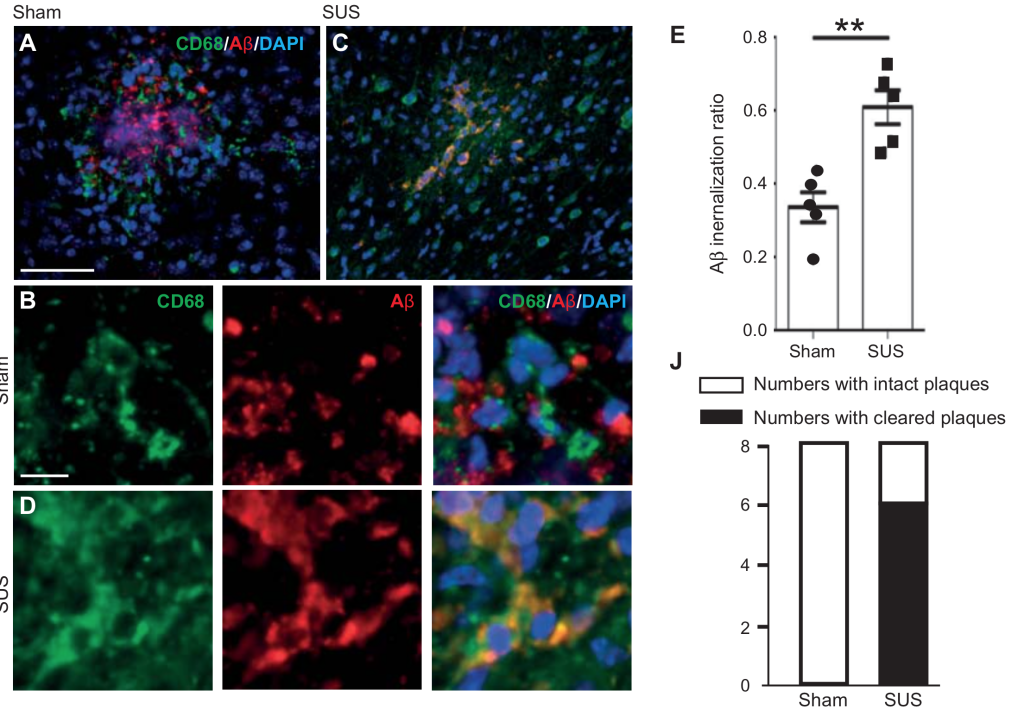This papers discusses a new technique that uses ultrasound to remove amyloid beta plaques that have built up in the brain. At first read, I presumed that something with the sound waves was shaking the plaques free, but on a deeper reading it is clear that what the sound waves are doing is opening up the blood-brain barrier (BBB) and enabling the brains natural defenses, microglia, to come in and break down the plaques.

This seems like a significant advance if they are able to show similar results in humans, and at the same time show no damage being caused to the brain. They are using the energy from ultrasound to narrowly focus on a specific spot of the brain and with 6 to 8 treatments over 6 to 8 weeks they are able to remove 50% of the amyloid and restore memory functions in 3 independent memory tests. They are able to restore memory functions to what you would find in normal mice.

They were concerned about causing damage from circulating plaques and thought the amyloid would be cleared and found in the blood, but they could not find it in the blood.they found the most of the plaque residue in the microglial cells’ lysosomal compartments. Microglial cells are the defense system of the brain and they found more than double the amount of amyloid plaques than normal. They were also worried about whether the ultrasound would cause growths that could result in tumors, but no evidence was found either.

This paper may be describing the beginnings of an entirely new technique to combat Alzheimer’s which is important because people are living longer and have a higher risk of cognitive impairment related to the build-up of plaques as they age. As of now, the technology is also just using the ultrasound to activate the microglial cells, but in the future it may also be used to open the blood brain barrier for higher uptake of Alzheimer drugs.
Abstract
Amyloid-β (Aβ) peptide has been implicated in the pathogenesis of Alzheimer’s disease (AD). We present a nonpharmacological approach for removing Aβ and restoring memory function in a mouse model of AD in which Aβ is deposited in the brain. We used repeated scanning ultrasound (SUS) treatments of the mouse brain to remove Aβ, without the need for any additional therapeutic agent such as anti-Aβ antibody. Spinning disk confocal microscopy and high-resolution three-dimensional reconstruction revealed extensive internalization of Aβ into the lysosomes of activated microglia in mouse brains subjected to SUS, with no concomitant increase observed in the number of microglia. Plaque burden was reduced in SUS-treated AD mice compared to sham-treated animals, and cleared plaques were observed in 75% of SUS-treated mice. Treated AD mice also displayed improved performance on three memory tasks: the Y-maze, the novel object recognition test, and the active place avoidance task. Our findings suggest that repeated SUS is useful for removing Aβ in the mouse brain without causing overt damage, and should be explored further as a noninvasive method with therapeutic potential in AD.
via Scanning ultrasound removes amyloid-β and restores memory in an Alzheimer’s disease mouse model.

